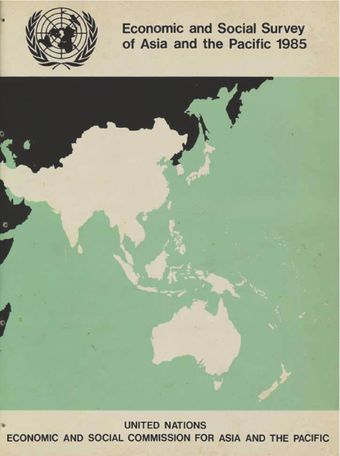Patterns of merchandise trade

- Author: United Nations Economic and Social Commission for Asia and the Pacific
- Main Title: Economic and Social Survey of Asia and the Pacific 1985 , pp 128-145
- Publication Date: December 1985
- DOI: https://doi.org/10.18356/4e951ec6-en
- Language: English
Despite a wide diversity across countries covering a vast geographical area, the dynamism of the ESCAP region in international trade is well recognized. Indeed, during the period since the Second World War, the world has witnessed the emergence of new major world trading nations in manufactures from this region. Quite apart from Japan, which has become one of the industrially most advanced countries in the world in part because of its trade-oriented economic policies, several developing economies in the region have become classified as newly industrializing countries. Other developing countries in the region, with different mixes of import substitution and export promotion policies, have also shown a tendency in recent years to assign a greater role to trade in their development strategies. The developing economies in the region as a whole are rapidly acquiring some weight in the world trade circuit, not only as important exporters of both traditional and manufactured products but also as major sources of demand for exports of developed and developing countries alike. In fact, among the six new names appearing on the 1984 GATT list of 20 leading exporters and importers, there are four members and associate members of ESCAP, namely China, Hong Kong, the Republic of Korea and Singapore. The share in world trade (including oil) for each of these economies ranges between 1.3 and 1.6 per cent.
-
From This Site
/content/books/9789210599078s005-c002dcterms_title,dcterms_subject,pub_keyword-contentType:Journal -contentType:Contributor -contentType:Concept -contentType:Institution105


